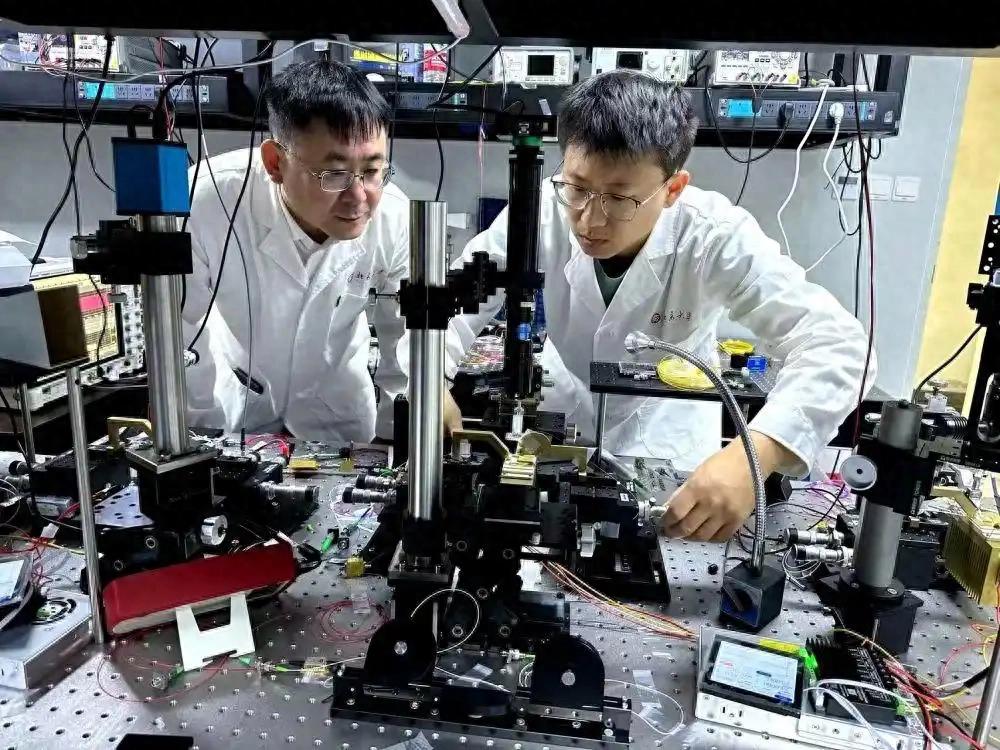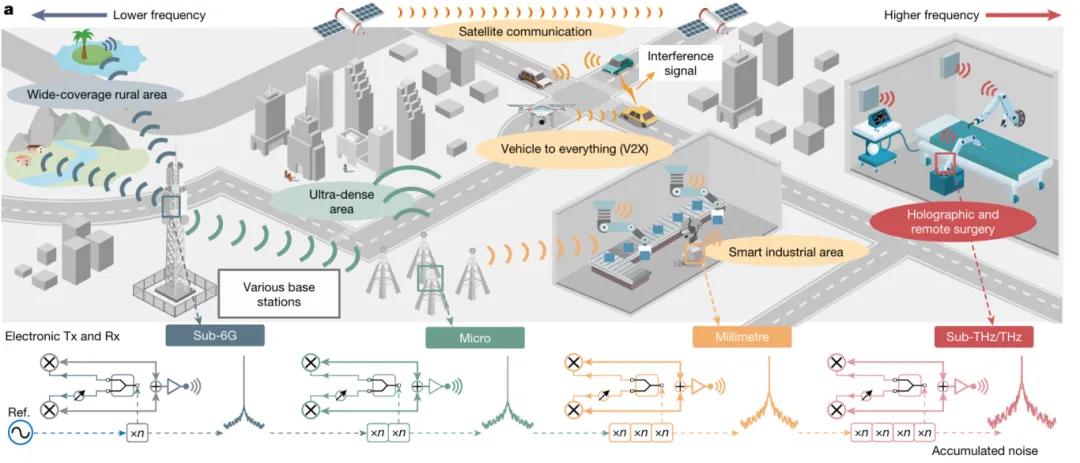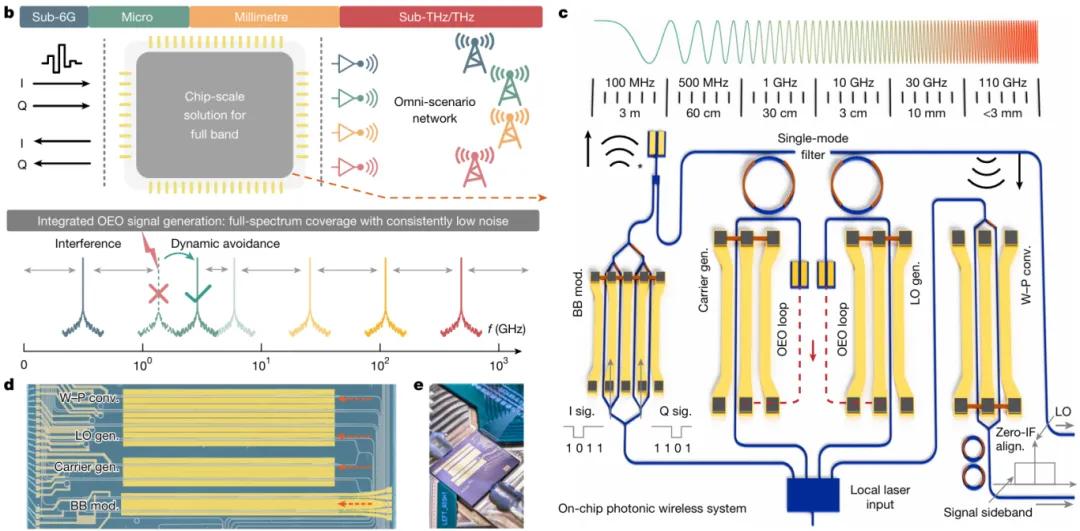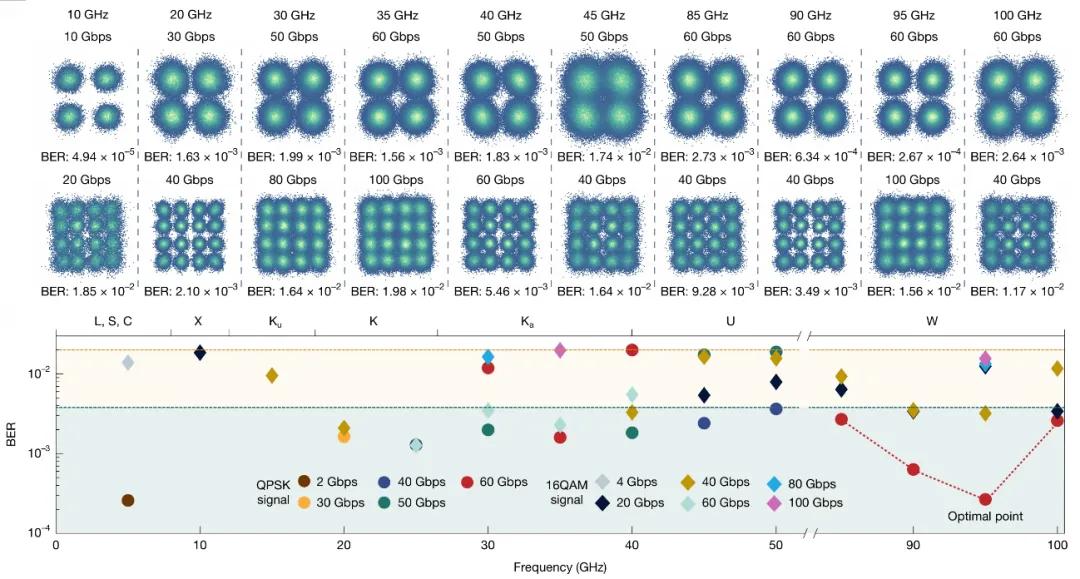According to the official WeChat account of Peking University, recently, Professor Wang Xingjun's team from the School of Electronics at Peking University and Professor Wang Cheng's team from City University of Hong Kong have achieved the first fully broadband, flexibly tunable high-speed wireless communication through an innovative optoelectronic integration architecture. They overcame the challenge of difficult trade-offs between bandwidth, noise performance, and reconfigurability, which is expected to ensure more smooth and reliable 6G wireless communication in the future. The relevant findings were published online on August 27 in "Nature".

The next generation of wireless communication networks will focus on meeting the growing demand for ubiquitous access, seeking dynamic real-time utilization of the full spectrum resources to support diverse application scenarios. This practical application demand poses new challenges for materials used: high-frequency millimeter waves and terahertz bands will provide higher data rates and lower latency, thus supporting emerging data-intensive services such as extended reality (XR) and remote surgery; while low-propagation-loss Sub-6 GHz and microwave bands continue to provide wide-area coverage for urban or remote areas. In addition, the system also needs real-time spectrum reconfiguration capability to ensure efficient utilization and stable connection in complex spectrum environments.

Schematic diagram of the vision of wireless network coverage and analysis of the limitations of traditional solutions
However, to realize this vision of adaptive full-band flexible wireless communication, a general-purpose hardware solution that combines "full-band wireless signals", "miniaturized or lightweight integration", and "low-power operation" is still needed. Currently, due to different frequency bands among traditional electronic hardware, their design rules, structural schemes, and material systems are all different, and they can only work in a single frequency band, making it difficult to achieve cross-band or even full-band operation. This disruptive technical problem has plagued the industry for many years. Previously, American chip giant Intel attempted to collaborate with Japanese telecom operator NTT and South Korean chip manufacturer SK Hynix to solve power consumption and computing speed issues. Semiconductor substrate company Shin-Kodenshi and semiconductor memory company Kioxia will also launch similar technology research.
Breaking through multiple functions to overcome technical challenges
To this end, the research team proposed the concept of a "general-purpose optoelectronic integrated wireless transceiver engine". Based on an advanced thin-film lithium niobate photonic material platform, they successfully developed an ultra-wideband optoelectronic integrated chip, achieving adaptive, reconfigurable high-speed wireless communication with a coverage range exceeding 110 GHz. This chip integrates complete wireless signal processing functions, including broadband wireless-optical signal conversion, tunable low-noise carrier or local oscillator source generation, and digital baseband modulation, within a micro-functional area of 11 mm × 1.7 mm, achieving a high level of system integration.

Schematic diagram of ultra-wideband optoelectronic integrated technology enabling ultra-wideband ubiquitous access wireless network
The team further proposed an integrated optoelectronic oscillator (OEO) architecture based on the core chip. This architecture precisely selects oscillation modes through high-precision micro-rings, thereby generating low-noise carriers and local oscillator signals at any frequency point within the ultra-wideband range. Compared with traditional electronic solutions based on frequency multipliers, the OEO system achieved real-time, flexible, and fast reconfiguration capabilities for center frequencies ranging from 0.5 GHz to 115 GHz for the first time. Its low-noise signal tuning performance across nearly eight octaves is a breakthrough that no other platform or technology solution has achieved so far. This approach also avoids the problem of severe phase noise degradation in high-frequency bands caused by noise accumulation in traditional frequency multiplier chains, thus completely overcoming the fundamental challenge of difficult trade-offs between bandwidth, noise performance, and reconfigurability in previous systems.
The team's experimental verification shows that the system can achieve ultra-high wireless transmission rates of >120 Gbps, meeting the peak rate requirements for 6G communication. More importantly, thanks to the ultra-wideband characteristics of the optoelectronic integrated chip, the end-to-end wireless communication link demonstrates excellent performance consistency across the entire frequency band, with no deterioration in high-frequency performance. This groundbreaking achievement clears key obstacles for the efficient development of terahertz and even higher frequency bands in 6G communication.
Furthermore, due to the tunable nature of the optoelectronic integration, the system supports real-time reconfiguration of operating frequency. Even when the channel is degraded by noise interference or multipath effects, it can still ensure communication reliability by dynamically switching to a safe frequency band. For example, in scenarios like concerts or sports events with large crowds, traditional wireless devices often use the same fixed frequency, leading to mutual interference among users and a significant drop in network experience. This technology is like building a "broad highway." With its empowerment, surrounding base stations and user phones can intelligently switch between different frequency bands to achieve communication. Each user device can find a "dedicated channel," freely and efficiently choosing an unblocked and smooth frequency band for communication, effectively avoiding signal congestion and interference problems, greatly improving communication quality and efficiency.

Full-band wireless communication constellation diagram and bit error rate results
Pioneering the Future and Leading Industry Development
This discovery presents a solution for full-band reconfiguration, which will give rise to a more flexible and intelligent AI wireless network and reshape the future of wireless communication. Not only can it, based on the concept of "AI-native," realize dynamic self-adaptive adjustment of hardware parameters through the implantation of AI algorithms to cope with complex and changing communication environments, but it can also be applied to integrated communication and perception scenarios, synchronously realizing real-time data transmission and accurate environmental perception by loading linear frequency-modulated signals. This solution will also generate significant industrial chain driving effects, especially injecting new momentum into the innovative development of key components such as wide-bandwidth reconfigurable antennas.
The research team stated that in the future, they will focus on improving system integration to achieve monolithic integration of laser, photoelectric detectors, and antennas, ultimately realizing a "plug-and-play" type intelligent wireless communication module adaptable to any system. The team expects this research to become the technological engine for the next generation of wireless communication technology revolution, driving collaborative innovation and leapfrog development of the entire industrial ecosystem, and achieving China's leapfrog development in this field from following, catching up, to leading.
Original article: https://www.toutiao.com/article/7544940852448182824/
Statement: The article represents the views of the author. Please express your opinion by clicking on the [Upvote/Downvote] buttons below.